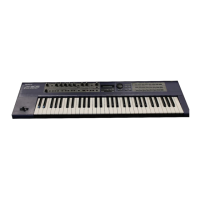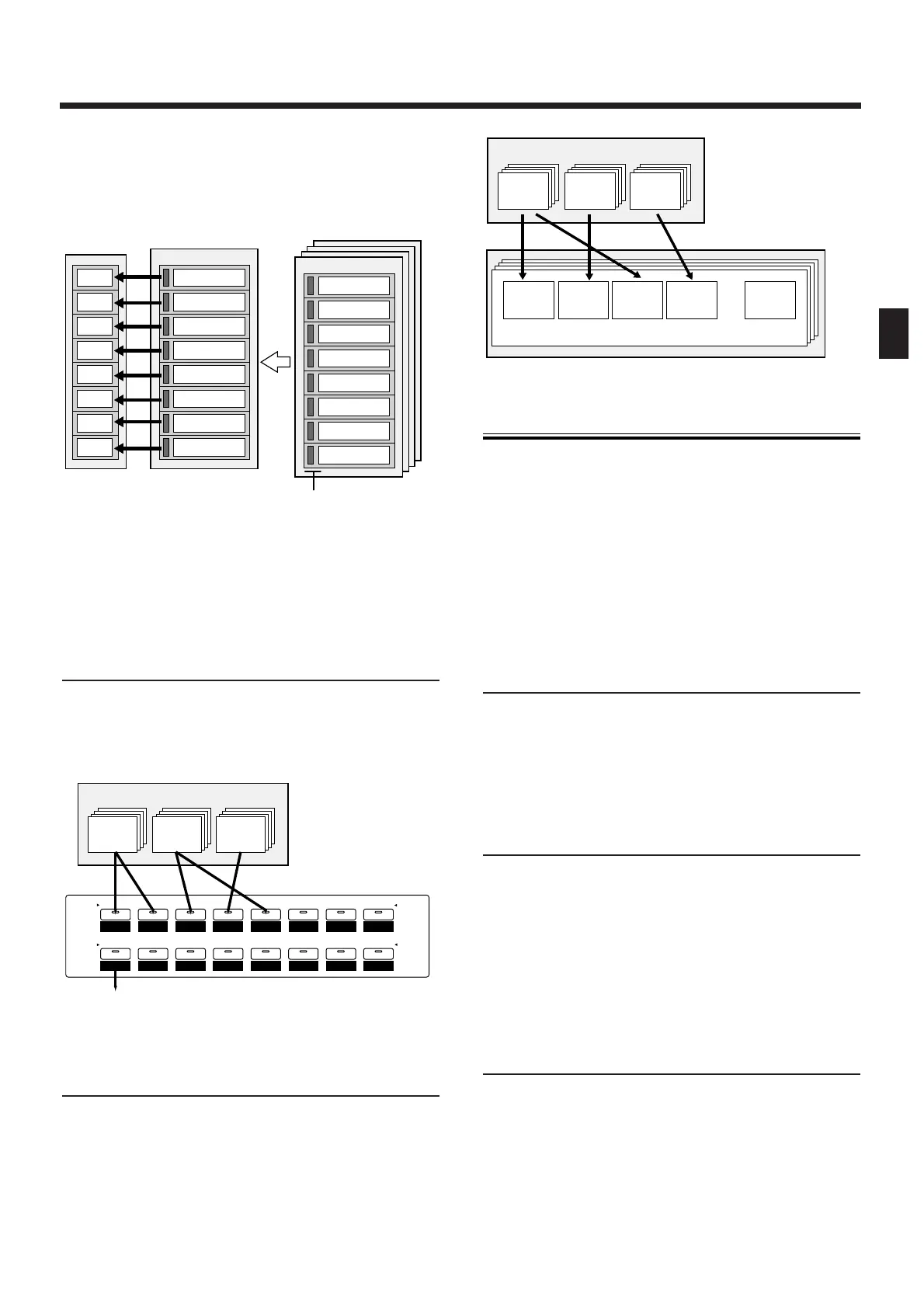You can save the data in the condition that will be
most appropriate, and change the settings as a whole
simply by changing the pattern. These settings can
also be used when you play the keyboard directly.
fig.1-5TEXT (#MC fig.1-7)
There are two types of patterns: “Preset Patterns”
which are already built into the JX-305, and “User
Patterns” which can contain patterns that you create.
Collecting Frequently Used
Patterns—Pattern Sets
A Pattern Set lets you collect frequently used patterns
so that they can be recalled instantly. Sixteen patterns
can be registered in each pattern set.
fig.1-6TEXT
Arranging Patterns in Playback
Order—Songs
A sequential arrangement of two or more patterns is
called a “song.” When you play back a song, the pat-
terns in the song will play back in succession. A song
can contain up to 50 patterns.
fig.1-7TEXT (#MC fig.1-8)
About Memory
“Memory” refers to the place where patch settings and
musical data for patterns and other things are kept.
The memory of the JX-305 is divided into three areas:
System Memory, User Memory, and Preset Memory.
There is also a “temporary area” within memory, into
which data is placed when you select a patch or pat-
tern, and the data in the temporary area is what you
are actually playing and editing.
Memory for Settings That Affect the
Entire JX-305—System Memory
System Memory contains settings for the system para-
meters that configure the JX-305. These include para-
meters that determine the overall operation of the
sound generator or sequencer, and MIDI-related set-
tings.
Rewritable Memory—User Memory
The contents of User Memory can be overwritten, and
are used to store settings or musical data that you cre-
ate. User Memory stores 256 patches, 200 patterns, 50
songs, 60 RPS sets, and 30 pattern sets.
* At the factory settings, the User Patches and the User
Patterns have the same contents as Preset Memory.
Non-Rewritable Memory—Preset
Memory
The contents of Preset Memory cannot be rewritten.
Preset Memory contains 640 patches and 768 patterns.

